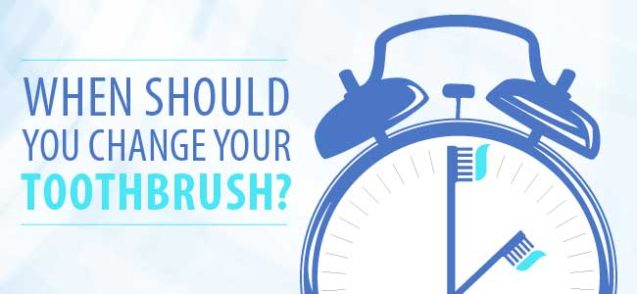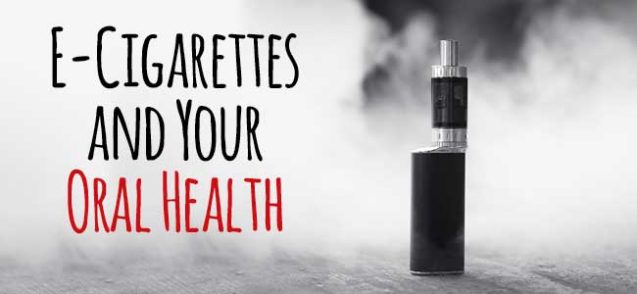By admin
15 Aug, 2016
Dental Health, Dental Tips, General Dentistry, General Health, Lifestyle, Oral Health
bruxism, dental health, stress, stress relief, teeth clenching, TMD, TMJ
Stressed Out: Can Stress Affect Your Teeth?
You have too much to do at work. You have to juggle a million tasks between your children, your spouse, and errands — not to mention your mother-in-law is in town for the weekend. We all have those days, and those days can add immense stress to your life. That stress affects more than just your emotional health; it physically alters you as well.
Physical Symptoms of Stress on Your Mouth
Your mouth already experiences daily wear and tear that you need to prevent as much as possible. If you are too stressed, this adds another layer of factors fighting against the health of your mouth. It starts before you even realize — you are stressed out thinking about everything you need to do, and then you notice you’ve been clenching your teeth for the past few minutes. Depending on how you handle stress, you may be doing this multiple times per day, which takes a toll on your mouth.
Stress-related clenching and teeth grinding (also called bruxism) can carry into the night while you sleep. If left untreated, bruxism can also destroy dental restorations (fillings, crowns, bridges, etc.) that you’ve had done, creating more pain and costing more money. Additionally, this can lead to temporomandibular joint disorders (TMJ/TMD). Symptoms can include:
- Constant headache
- Sore jaw muscles
- Sensitive teeth
- Extra tooth wear
How to Prevent Teeth Grinding and Clenching
Since one of the main causes of teeth grinding and clenching is stress, the best way to stop is to reduce your stress. Hold on — put down that glass of chardonnay or moonshine you have after work to unwind (alcohol increases the likelihood of teeth grinding while sleeping). Here are some stress-management techniques that will help reduce your overall stress.
- Exercise. Not only does this release endorphins to help combat stress, but at the end of the day, you’ll be too tired to have stress-inducing thoughts.
- Autogenic relaxation. This method involves “commanding” your body to relax. This takes a lot of practice but can be very effective once learned. Learn more about autogenic relaxation here.
- Visualization. Trying to use all five of your senses, imagine a scenario that is relaxing. For example, if you imagine yourself in a forest, listen to the sway of the branches, feel the warm light creeping between the trees, and note the scent of pine needles.
- Listen to your favorite music. Classical is always a reliable genre to relax to, but listen to the type of music that helps you unwind.
These techniques will only work if you allow them to. When using them, ensure you have an open mind and allow yourself to relax. Everyone is different, and it will take time to find what relaxes you, as well as mastering the technique itself. The benefits of stress-management strategies will not only help your teeth-grinding issue but also provide benefits for many other health issues you may be experiencing.
Other Stress Reducing Tips to Consider
- If you notice throughout the day that you are still clenching, stick the tip of your tongue between your teeth. This will force you to relax your jaw muscles.
- According to the TMJ Association, take anti-inflammatory medicine (such as ibuprofen) to help with swelling and pain until you can get your teeth grinding and TMJ/TMD under control. Check with your physician to see if you are able to take anti-inflammatory medicines.
- Place a warm washcloth on your jaw before you go to bed to help relax your muscles.
If you try these stress-relieving techniques and are still experiencing pain related to clenching and grinding, your Lancaster, CA dentist can do an examination to determine the best course of action. In most cases, your dentist can create a mouth guard/splint to prevent clenching and grinding.
Additional Dental Services May Include:
- Managing pain with a special diet
- Stretching exercises
- Anti-inflammatory medications
For more information about stress and your dental health, request an appointment at Douglas B. Weber by calling (661) 952-7865 today.
Reference:
Stress management. (n.d.). Retrieved July 12, 2016, from http://www.mayoclinic.org/healthy-lifestyle/stress-management/in-depth/relaxation-technique/art-20045368
Teeth Grinding (Bruxism): Causes and Treatments. (n.d.). Retrieved July 12, 2016, from http://www.webmd.com/oral-health/guide/teeth-grinding-bruxism
TMJ Association, Ltd. (n.d.). Retrieved July 13, 2016, from http://www.tmj.org/site/page?pageId=257
More
Keep Your Toothbrush in Fighting Shape
Everything You Need to Know About Your Toothbrush
You hear it time and time again: Brush your teeth at least twice a day. It becomes so routine that you brush your teeth while juggling a few other tasks at the same time. How much time goes by before you notice the shape your toothbrush is in? Have you ever thought to yourself, “I don’t need to clean my toothbrush, my toothbrush cleans me!” The condition of your toothbrush is often the last thing you think about in your busy life, but it plays a significant factor in your oral health.
Symptoms of an Unclean, Older Toothbrush
The most common issue with an older toothbrush is effectiveness. When the bristles are frayed, its cleaning ability is compromised — leaving your teeth more exposed to bacteria.
According to the American Dental Association (ADA), you should monitor and replace your toothbrush more often if you or a family member have:
- A systemic disease that may be transmissible by blood or saliva
- A compromised immune system or low resistance to infection due to disease, chemotherapy, radiation treatment, etc.
How to Disinfect Your Toothbrush
- Rinse and air dry. The simplest way to keep your toothbrush clean: After every use, rinse it and keep it upright in an open area.
- Soak it in hydrogen peroxide.
- Boil it in hot water. This is another simple option, but be sure the toothbrush is completely cooled before handling/using. No one wants scalded gums.
- Use an ultra-violet light toothbrush sanitizer. These sanitizers made for toothbrushes (more specifically, electric toothbrush heads) are a good option, but studies show that while they do kill bacteria, they don’t have a distinct advantage over any other method.
The ADA warns to be wary of any product that says it will do more than sanitize or reduce bacterial contamination. If you are interested in a toothbrush sanitation product, make sure it is Food and Drug Administration approved. There isn’t an obvious answer as to which method is preferred or best, so do what works for you.
Not Recommended Toothbrush Care
- Microwave: While this idea makes sense on paper, the ADA doesn’t approve. It will most likely kill bacteria on your toothbrush, but zapping it can have adverse effects on the brush itself.
- Dishwasher: While this is an effective way to clean your toothbrush, the ADA states that this method will also compromise the quality of your brush.
How Often Should I Change My Toothbrush?
For typical usage with no special circumstances, you should change your toothbrush every three to four months. If you see that your toothbrush bristles are frayed or beginning to fray, replace it. If your toothbrush seems to fray too fast, you are mostly likely brushing too hard — go easy on those teeth!
Do I Need to Change My Toothbrush After I’ve Been Sick?
Research shows that this is unnecessary. While those germs are still on your toothbrush, your body has the antibodies to fight off anything related to that particular sickness you just got over. With this in mind, don’t share said toothbrush (or any toothbrush, for that matter) with another person, because they can get sick from those germs.
To keep your teeth strong and your mouth healthy, the quality of your toothbrush absolutely matters. It is important to keep your brush as clean as possible while you are using it. The most beneficial thing you can do is keep track of how long you have been using your toothbrush and replace it routinely. For more information, contact your Lancaster, CA dentist Douglas B. Weber, DDS today.
Reference:
http://www.ada.org/en/about-the-ada/ada-positions-policies-and-statements/statement-on-toothbrush-care-cleaning-storage-and-
More
By admin
15 Jul, 2016
Dental Health, Dental Tips, General Dentistry, General Health, Lifestyle, Oral Health
bad breath, damaged gums, dental hygiene, gum disease, oral health
For many smokers, e-cigarettes seem like the best answer to avoiding the nasty side effects of smoking traditional cigarettes, including the odor and the staining of teeth, skin, and clothing. Though e-cigarettes still contain the highly addictive chemical nicotine, tobacco and other harmful elements are eliminated from the electronic smoking process, or what some refer to as “vaping.”
The growing popularity of e-cigarettes and vaping, especially among young people, has caused a rise in concern over the lack of knowledge around the effects it has on health. While clinical studies are currently underway, in 2014 the U.S. Food and Drug Administration (FDA) released a statement saying “e-cigarettes have not been fully studied, so consumers currently don’t know the potential risks of e-cigarettes when used as intended, how much nicotine or other potentially harmful chemicals are being inhaled during use, or whether there are any benefits associated with using these products.”
Even though the FDA isn’t yet ready to comment on health risks associated with vaping, dentists are able to speak to how these new smoking devices threaten your oral health. Nicotine is harmful to your teeth and gums, even in the absence of tobacco and other chemicals traditionally found in cigarettes. Electronic cigarettes still deliver nicotine to their users through the mouth, throat, and lungs. The following are some of the consequences that come with using smokeless cigarettes.
Gum Disease: One of the telltale signs of gum disease is swelling of the gums caused by irritation. Nicotine reduces blood flow, preventing swelling, which can mask the presence of gum disease — causing your dentist to miss the symptoms and allowing the disease to progress.
Gum Recession: Lack of blood flow to the gums keeps the tissue from receiving the nutrients it needs to survive. Over time the skin dies and recedes.
Bad Breath: Nicotine restricts your body’s ability to produce saliva, which makes your mouth vulnerable to harmful bacteria and tooth decay. Combined, dry mouth and bacteria lead to halitosis, which can be embarrassing and can affect your self-esteem.
Intense Grinding: As a stimulant, nicotine causes muscles to tighten and spasm against the user’s will. It can cause sleep disturbances such as insomnia and grinding of the teeth. Grinding, especially while sleeping, can be damaging to teeth and result in the loss of tooth enamel, as well as chipping, cracking, and breaking of teeth.
If you want to maintain your best oral health, avoiding any type of smoking is recommended. If you do choose to smoke, keeping it to the minimum and maintaining your best at-home oral hygiene practices as well as your routine visits to the dentist is important.
If you see signs of periodontal disease (including red, swollen, bleeding, or receding gums) or experience bad breath, painful chewing, or loose teeth, make sure to contact your dentist immediately. There are treatments you can receive that will help keep your teeth and gums in the best possible condition. Two such treatments include:
- Professional dental cleanings
Plaque and tartar are removed from above and below the gumline. If you have gingivitis or signs of periodontitis, you will be required to have this level of cleaning twice a year or more.
- Scaling and root planing
Plaque and tartar are scraped away from both above and below the gumline while under local anesthetic (scaling). Rough spots on the tooth root are then smoothed out (planing). Locally applied medications, such as antimicrobials and antibiotics, may be used.
If you are experiencing jaw tightness or pain, and you think you might be grinding your teeth, your provider can fit you with a mouthguard that will protect your teeth while you sleep.
It can be difficult to share your habits with your dentist. At Douglas B. Weber, DDS, we treat our patients with respect and compassion. We are here to help you be your healthiest self. If you use e-cigarettes and are concerned about how they may be affecting your oral health, call us today and set up a consultation. We will help you protect your teeth and maintain your natural smile.
More
By admin
15 Jun, 2016
Dental Health, Dental Tips, General Dentistry, General Health, Lifestyle, Oral Health
brushing, children's dentistry, flossing, oral hygiene, pediatric dentistry

Even though baby’s first teeth are temporary, getting an early start on excellent dental hygiene practices, including both brushing and flossing, is essential to a lifetime of good oral health. Dental decay is one of the most common childhood diseases. According to the Centers for Disease Control and Prevention (CDC), 42% of children ages 2 to 11 have had cavities in baby teeth, and 21% of those ages 6 to 11 have had cavities in permanent teeth.
Tooth decay not only poses a threat to tiny teeth, it can negatively affect a child’s whole health, as well as how they feel about themselves. One of the longest-lasting benefits of a healthy smile during childhood is the foundation for a healthy self-image.
Start Early
Brushing
You should begin cleaning a baby’s gums after each feeding with gauze or a soft cloth starting immediately after birth. As soon as the baby teeth begin to erupt, you can use a soft-bristled child’s toothbrush to clean your toddler’s teeth. Continue brushing for them until they have the dexterity to take over (approximately around 6 years old).
Flossing
Flossing is difficult for small, untrained hands. Your child doesn’t have to begin brushing right away, but once their tooth surfaces are almost touching, plaque and food begin to settle in between teeth, which can lead to gum disease and tooth decay. At this point, they should begin learning to floss and doing so at least once a day.
Teaching your child to floss can be tricky. The following steps will help you get them off to an easy start.
- Choose soft, flavored floss that’s gentle on your child’s gums and tastes good.
- Measure out a length of floss that runs from your fingers to your elbow.
- Wrap the floss around your child’s fingers as you would your own when flossing, but make sure it isn’t so tight that it cuts off circulation or causes any discomfort.
- Gently guide your children’s fingers, and show them how to glide the floss between the teeth.
- Show them how to make the floss into a C shape and curve it carefully beneath the gum line.
- Make sure they shift the floss to the next finger between each tooth so that they use fresh floss in each space.
At first flossing may be difficult and even frustrating for your little one. They may not like wrapping the string around their fingers, or they may just find changing the wrap of the floss too difficult. Fortunately, there are a wide variety of child-friendly floss sticks available in different colors and flavors. They come in packs of 50 to 100, giving your little one room for error. Make sure they dispose of each floss stick after use.
If your child is having an extra difficult time learning to floss, or if they have braces, consider trying the Waterpik Water Flosser for Kids. It’s made with a simple design that makes flossing easy for children over the age of 6. It is child safe and designed for small hands, so that your child’s frustration will be alleviated and their teeth will get cleaned properly.
As your children develop, they will be able to execute flossing with ease and can decide whether to continue using their flossing stick or a Waterpik, or whether to take the more traditional route.
For more information and help educating your child on the importance of their oral hygiene practices, call us today. We prepare you with information and instructions on how to clean your child’s teeth, as well as how to teach your child to clean their own teeth — or we can teach them with you.
More
By admin
01 Jun, 2016
Cosmetic Dentistry, Dental Health, Dental Tips, General Dentistry, General Health, Lifestyle, Oral Health
cold sores, dental hygiene, dental tips, oral health

“Summer loving had me a blast, oh yeah. Summer loving happened so fast…” —Grease, Summer Nights
Its’ the stuff dreams and movies are made of: summer love. Warm summer nights, afternoons at the beach, vacations to the Caribbean—whether you are hoping to meet your next crush or are looking forward to romancing your long-time love —summer is sure to heat things up.
Did you know that June 19th is National Kissing Day? Are you ready to get romantic? A healthy mouth and kissable lips are key to having the summer you have been dreaming of. From making sure that your teeth and gums are in top condition, to protecting and caring for your lips so they stay soft and blemish free, there are several measures you can take to stay romance ready all summer long.
Tips for a healthy mouth
The best way to make sure that your mouth stays healthy and halitosis free is to stay on top of your at-home oral hygiene practices. Don’t forget the basics:
- Brush twice a day
- Rinse after brushing
- Floss daily
Take your oral care to the next level. You already know you need to set up routine visits with your dentist to keep your teeth in top condition. Consider the following treatments for extra protection.
- Regular fluoride treatments can help keep your teeth strong, especially if your water source is fluoride free.
- Dental sealants can protect your teeth from decay. Consider having them applied to your back teeth.
- Along with your routine cleanings, try a whitening treatment so that your healthy smile shines through.
Taking care of your lips
If you are concerned about keeping lips kissable, consider the following tips:
- Apply balm to your lips before you wash your face. It protects them from drying elements in your cleanser that can cause them to chap and flake.
- Use a humidifier at night to keep your skin (including your lips) moisturized.
- Don’t pick at flakey lips. Instead, remove the extra skin with a lip exfoliator or combine sugar and honey for a natural exfoliator.
- Protect your lips from the rays with sunscreen.
- If you wear lipstick, try to find one with vitamin E or Shea butter in it.
- Stay hydrated with water. Drink. Drink. Drink!
- If your lips are chapped, avoid spicy foods, foods high in citrus, and salt. They will only cause lips to dry out more.
- Avoid licking your lips. The acids in your saliva can cause irritation.
When cold sores appear
Nothing kills the mood like a cold sore. They are painful, unsightly, and contagious. They make talking and eating uncomfortable, and can be confidence busters when trying to woo someone.
Cold sores heal over the course of seven to 14 days, but true love doesn’t wait. There are over-the-counter treatments that come in the form of messy ointments and creams that make the lesions more noticeable when applied while only reducing the healing time by 1 to 2 days. Or, you can talk to your dentist about getting immediate results with laser therapy.
Laser therapy uses photonic laser energy to destroy the active virus responsible for the oral lesions and is accomplished quickly and comfortably without the need for anesthetic. Often, those who seek treatment at the first signs of the virus (tingling, and light burning sensations) don’t develop sores. However, if sores have already erupted the progression is stopped, and the appearance and discomfort is greatly decreased. Your lips will immediately appear significantly clearer, and be completely lesion-free in typically one to two days allowing you to feel more confident about getting cuddly.
The benefits of laser therapy include:
- Profound and immediate pain relief
- Treatment stops lesions’ progression immediately
- Significantly reduces healing time
- Treatment time of just a few minutes
- Treatment is painless and can be conducted with out anesthetic (it feels like warm air blowing)
- After treatment, sores reoccur with less frequency and less intensity at the same location
- Treatment is affordable and can be insurance reimbursable
With a little extra effort and support from your dental care providers, this summer is sure to be the best yet. Don’t let chapped lips or bad breath stand in the way of getting cozy under the summer night sky with that someone special. Call us today to schedule your next appointment or a cleaning and get your summer started off right.
More





